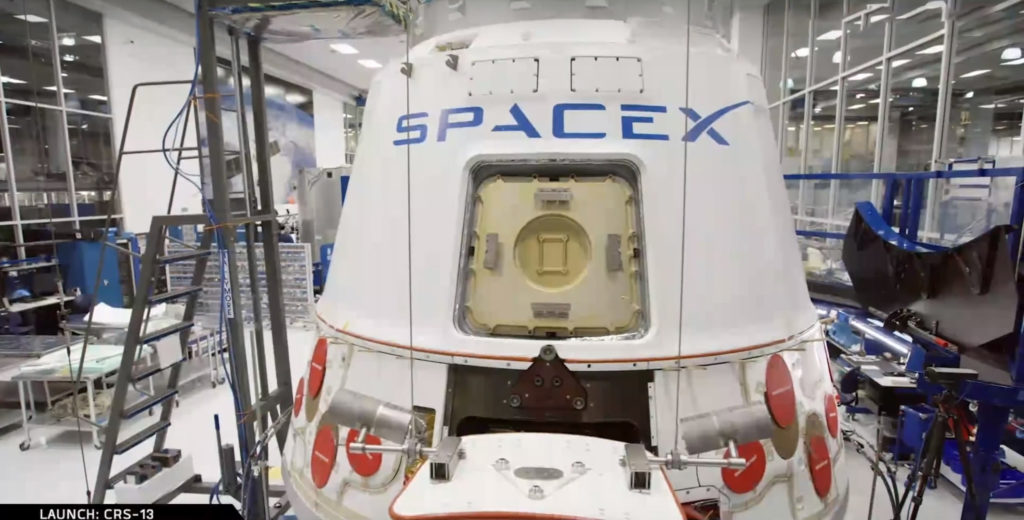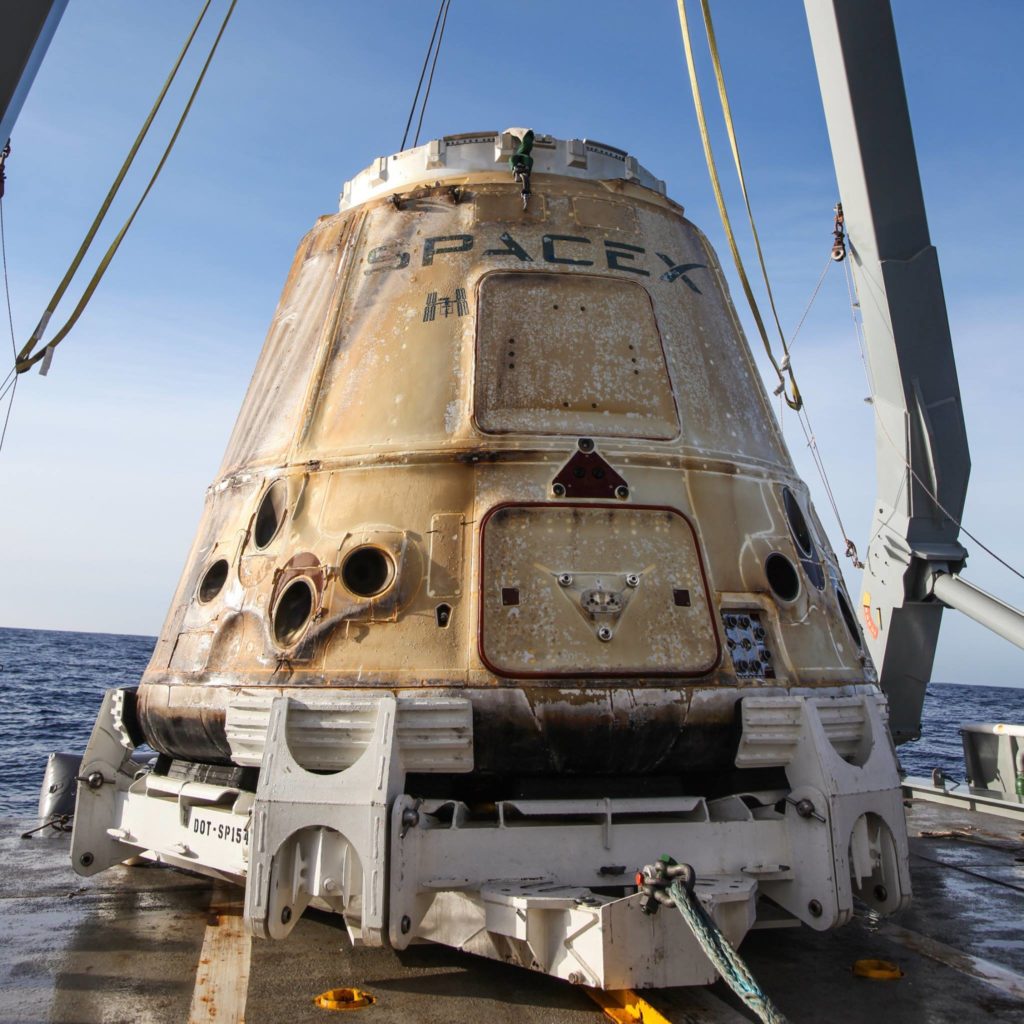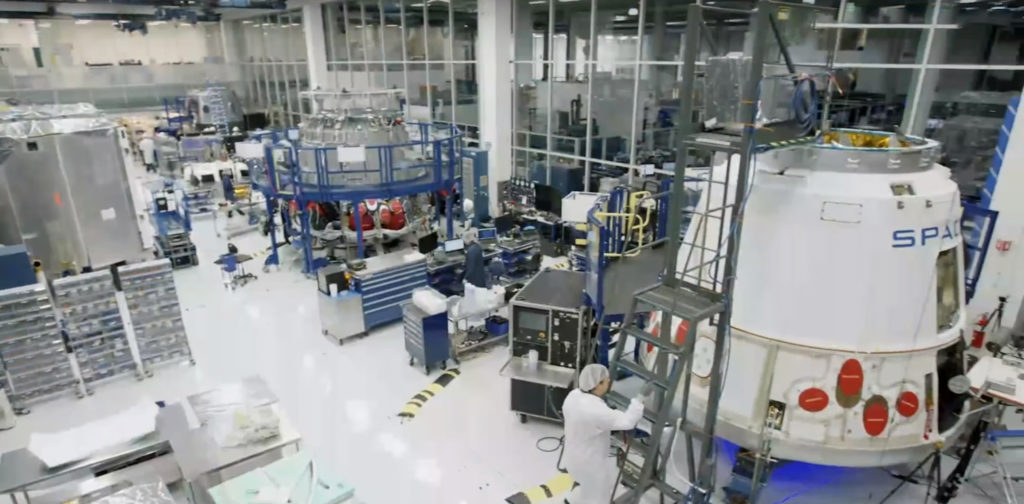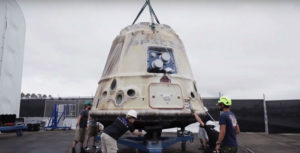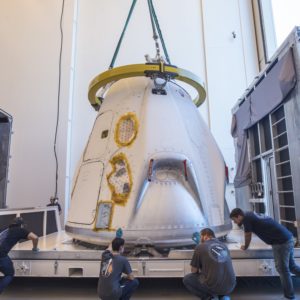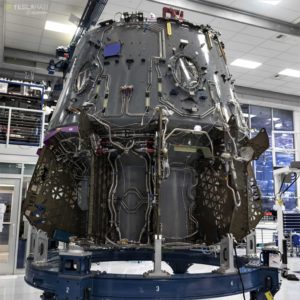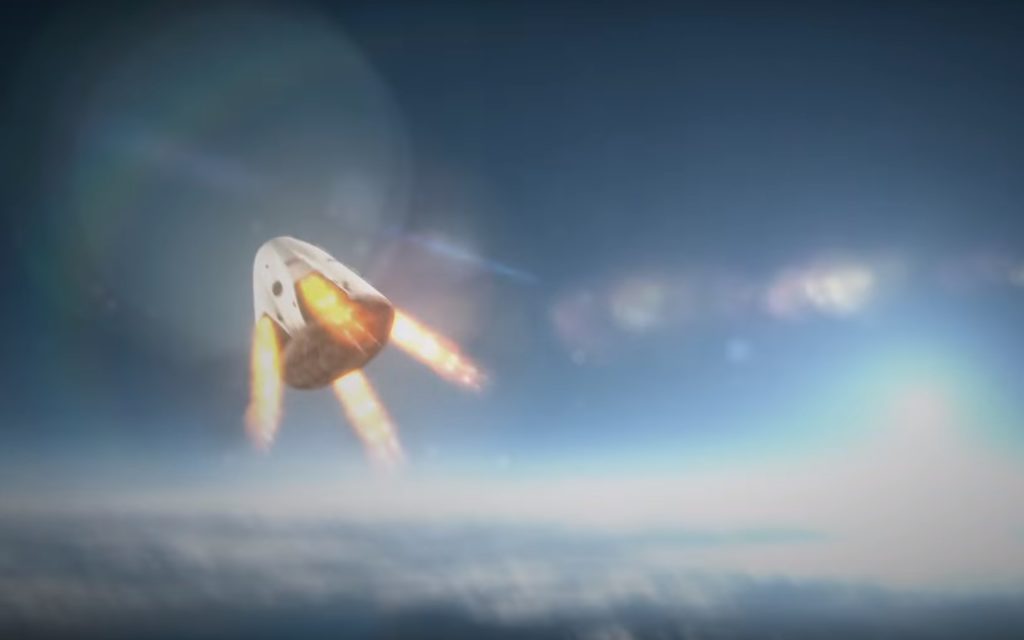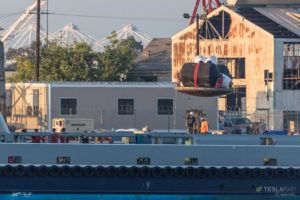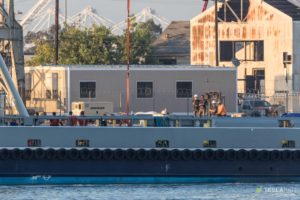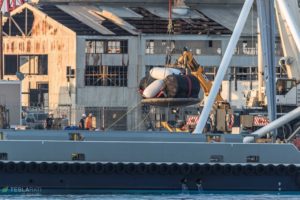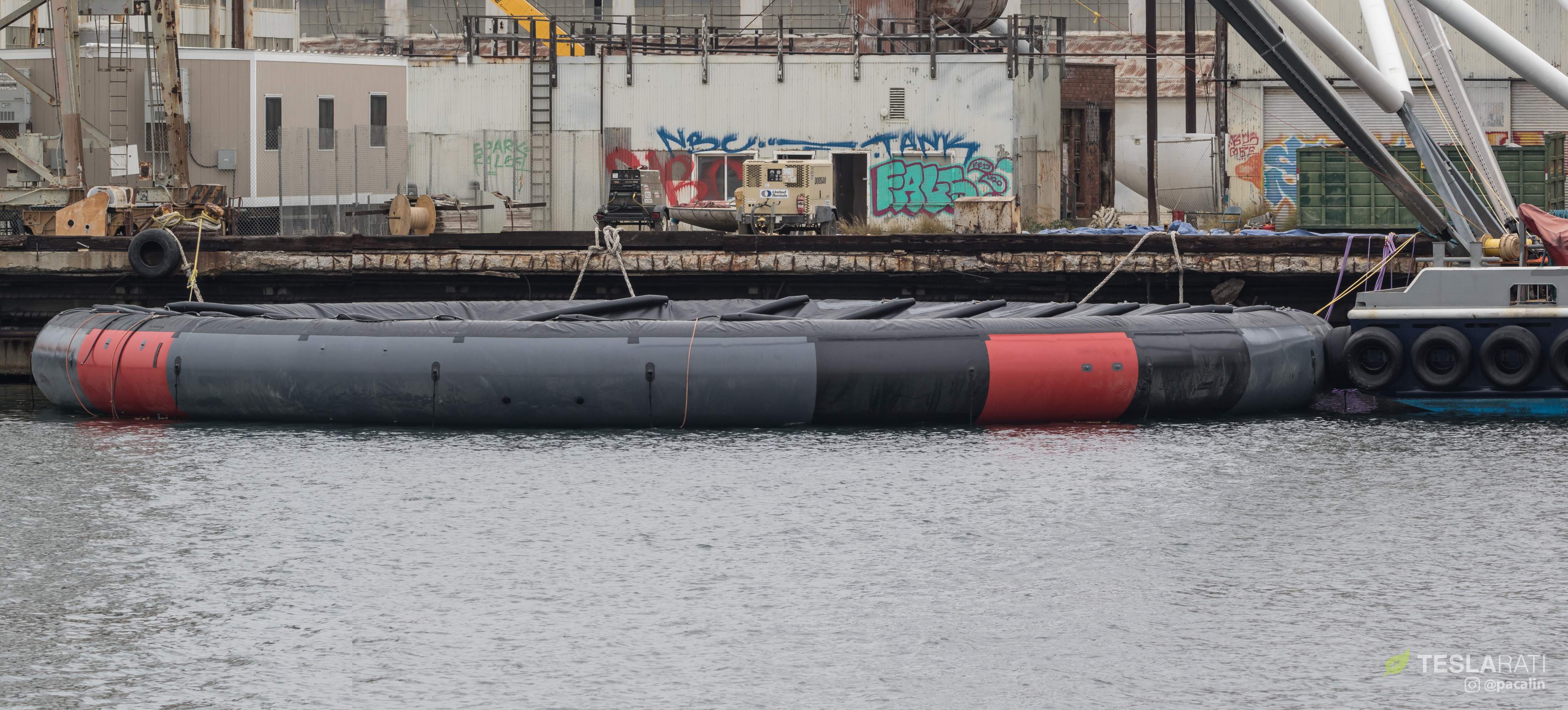

News
SpaceX gears up for Crew Dragon’s first recovery with a giant inflatable cushion
Paired with observations and comments from sources familiar with the company, all signs seem to indicate that SpaceX is planning to recover their first Crew Dragon spacecraft with a giant inflatable cushion, to be towed a hundred or so miles off the coast of California by one of the company’s Port of LA-stationed recovery vessels.
Despite a minor mishap during some sort of inaugural sea-trial of a custom Crew Dragon mass simulator, SpaceX technicians are pushing ahead with a test campaign intended properly characterize exactly how to best recover a Dragon while side-stepping around the problems caused by seawater immersion.
Inside the clean room at SpaceX HQ, Crew Dragon is nearing completion. This will be the capsule to make the first crewed flight, currently slated for April 2019.#spacex #CrewDragon @Teslarati pic.twitter.com/tjzuwfGV2O
— Pauline Acalin (@w00ki33) August 16, 2018
Why recover your Dragon?
First off, why would SpaceX choose to develop a new method of Dragon recovery – different than the company’s current experience with simply landing the capsules in the ocean – with the expectation that it will debut during the recovery of Crew Dragon after its very first demonstration mission (DM-1)? A huge number of unknowns and major questions remain, but the decision to attempt to avoid seawater immersion during the DM-1 Dragon recovery is very likely no coincidence.
Over the last several years, SpaceX engineers and technicians have learned a huge amount from recovering, refurbishing, and even reusing Cargo Dragons to resupply the International Space Station for NASA. Of all the lessons learned, the most unequivocal has to be a newfound appreciation for just how difficult it is to safely and reliably reuse spacecraft and rocket components after landing and being immersed in seawater. Despite SpaceX’s growing experience with reusing both Falcon 9 and Cargo Dragon, Dragons still typically require a bare minimum of 6-12 months of refurbishment before they are ready for another launch.
- SpaceX’s CRS-13 Cargo Dragon, capsule C108, seen near the end of its refurbishment. (SpaceX)
- A reused orbital spacecraft, Cargo Dragon, back on Earth after its second successful resupply mission. (SpaceX)
- All Crew and Cargo Dragons are built and refurbished in the same processing facility, a clean-room inside SpaceX’s Hawthorne, CA factory. (SpaceX)
For Crew Dragon’s DM-1 debut, it thus makes sense that SpaceX wants to recover the spacecraft in such a way that it is exceptionally easy to rapidly refurbish. Perhaps just several months after that capsule returns to Earth, currently expected no earlier than December 2018, SpaceX’s first crewed Crew Dragon demonstration’s tentative April 2019 launch debut will depend entirely on the completion and review of an In-Flight Abort (IFA) test planned just one month prior, March 2019.
The planned IFA test of Crew Dragon hinges entirely on DM-1 and Dragon refurbishment because the present plan (and launch schedule) absolutely depends on reflying DM-1’s Crew Dragon capsule, potentially recovered from orbit as few as three months prior.
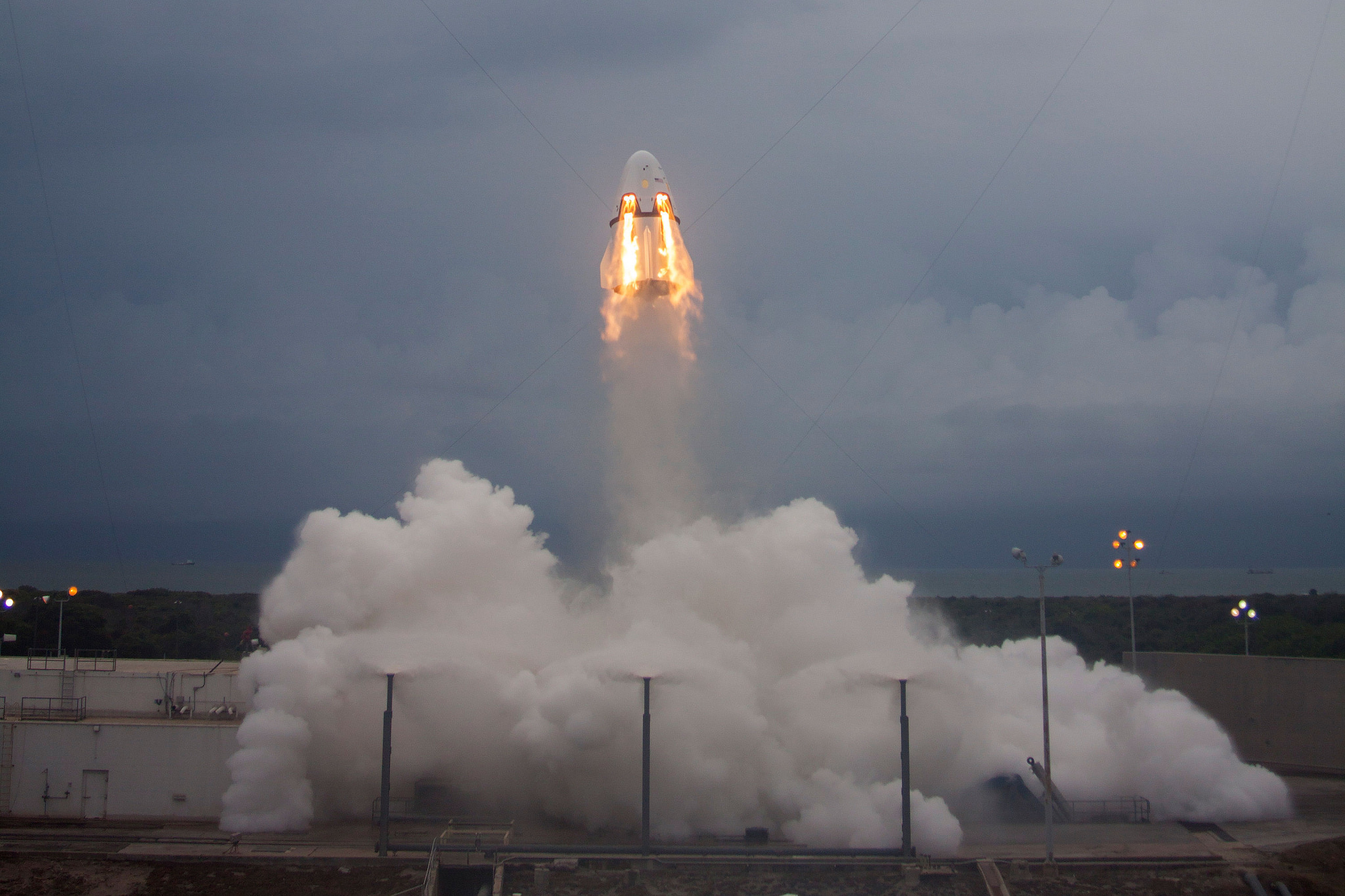
With a successful 2015 Pad Abort already under Crew Dragon’s belt, SpaceX voluntarily chose to conduct an additional complimentary in-flight abort not explicitly required by NASA, designed to demonstrate that Dragon will be able to safely extract astronauts from a failing rocket at the point of peak aerodynamic pressure (Max-Q). Essentially, a combination of successful aborts both on the launch pad and during Max-Q would theoretically demonstrate beyond any reasonable doubt that Crew Dragon really is capable of safely aborting a launch and protecting its astronauts at any point during launch.
Cargo Dragon has demonstrated that – apparently – no amount of heroics can refurbish the recovered spacecraft in just a small handful of months after seawater immersion, not without major changes to its design. As such, preventing that with some sort of inflatable cushion (or even Mr Steven’s net) would likely save many months of drying, cleaning, and requalification testing of all externally impacted components.
- Cargo Dragon returns to Earth looking rather well-done. (SpaceX)
- The first spaceworthy Crew Dragon capsule is already in Florida, preparing for its November 2018 launch debut. The same capsule will be refurbished and reflown as few as three months after recovery. (SpaceX)
- SpaceX Crew Dragon capsule C203 – then assigned DM-2 – is seen here in August 2018. (Pauline Acalin)
How to recover your Dragon
While the “why” is fairly obvious at this point, the “how” of actually making such a cushioned recovery happen is far less clear. Still, we at least know from several recent comments from SpaceX CEO Elon Musk and statements made in environmental impact analyses that the company has been considering such recoveries for some time.
Despite the fact that Crew Dragon’s original propulsive landing capability was nixed due to the unlikelihood of NASA ever certifying it for crewed landings and the expense required to attempt that certification, there is still clearly some latent interest (and value) in precisely landing Crew Dragon, even if only to speed up capsule and crew recovery after splashdown. A March 2018 preliminary environmental impact analysis of Gulf of Mexico Dragon recoveries – as a backup to bad weather in the Pacific and Atlantic – made the interest in precision exceptionally clear.
“The splashdown zone is a circle with a radius of approximately 5.4 nautical miles. … Dragon has been designed to perform precision landings in order to minimize the size of the splashdown zone and recovery time.”
Admittedly, a circle with a diameter of 10.8 nautical miles (20 km) does not exactly scream “precision” and ~20 km is likely around a thousand times less precise than what’s needed to land on the 30m-diameter inflatable structure present at Berth 240, but it’s probable that the splashdown zone as discussed is a worst-case scenario meant to give SpaceX’s recovery team plenty of wiggle room.
- Crew Dragon was originally designed with propulsive landings in mind, much like Falcon 9’s booster recovery. (SpaceX)
- In place of propulsive landing, it appears that a giant inflatable cushion is the new solution for quick reuse. (Pauline Acalin)
Musk also took a few seconds of a Falcon Heavy post-launch press conference to briefly describe Mr Steven, and he just so happened to touch on fairing and Dragon recovery:
“And we’ve got a special boat to catch the fairing. … It’s like a giant catcher’s mitt in boat form. I think we might be able to do the same thing with Dragon. So…if NASA wants us to, we can try to catch Dragon. Literally, it’s meant for the fairing, but it would work for Dragon, too.” – Elon Musk
Mr Steven takes one for the team
Even more experimental than fairing recovery, SpaceX happened to experience a minor incident while attempting to test aspects of its prototype Dragon catcher apparatus in early August. Partially captured by Teslarati photographer Pauline Acalin, SpaceX technicians were lifting a Crew Dragon heatshield mass simulator with a healthy topping of buoys onto Mr Steven. Moments after it was lowered onto the deck, the whole setup disappeared below the vessel’s side rails in a massive boom.
- The Crew Dragon mass simulator is loaded onto Mr Steven for the first time, August 3rd. (Pauline Acalin)
- Shortly after touchdown, the mass sim disappeared with a deafening boom, presumably breaking through Mr Steven’s wooden deck. (Pauline Acalin)
- SpaceX technicians lift a Crew Dragon mass simulator off of Mr Steven’s deck after accidentally breaking it. (Pauline Acalin)
According to sources familiar with SpaceX’s recovery fleet, the mishap was much less severe than the deafening noise it produced seemed to indicate from the sidelines. They described the aftermath as “an annoying accident” that was unlikely to take any significant amount of time to repair. More likely than not, Mr Steven’s wooden deck suffered some level of structural degradation after several years of active use, something that SpaceX technicians only discovered after loading (or maybe dropping) a heavy Dragon mass simulator aboard.
Regardless, one could certainly say that the test in question was more or less a success, as it most certainly demonstrated whether Mr Steven’s deck was actually capable of supporting the heavy test article (it was not). A few repairs and structural reinforcements later, the vessel is likely already back in working order, with photos taken on August 19th showing that the focus has returned to the vessel’s arms (two of which must have been removed earlier this week).
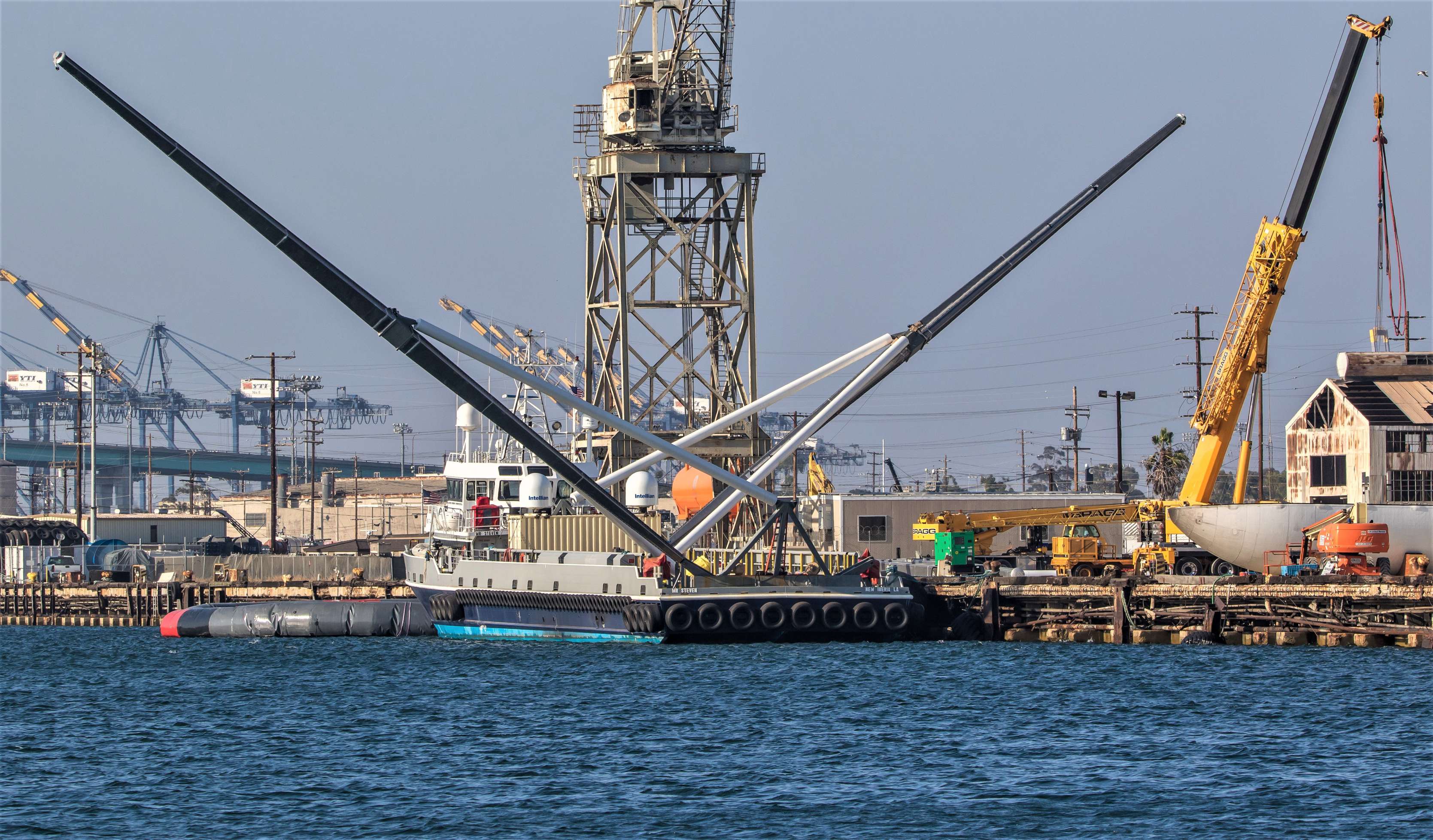
For prompt updates, on-the-ground perspectives, and unique glimpses of SpaceX’s rocket recovery fleet check out our brand new LaunchPad and LandingZone newsletters!
News
Tesla launches in India with Model Y, showing pricing will be biggest challenge
Tesla finally got its Model Y launched in India, but it will surely come at a price for consumers.

Tesla has officially launched in India following years of delays, as it brought its Model Y to the market for the first time on Tuesday.
However, the launch showed that pricing is going to be its biggest challenge. The all-electric Model Y is priced significantly higher than in other major markets in which Tesla operates.
On Tuesday, Tesla’s Model Y went up for sale for 59,89,000 rupees for the Rear-Wheel Drive configuration, while the Long Range Rear-Wheel Drive was priced at 67,89,000.
This equates to $69,686 for the RWD and $78,994 for the Long Range RWD, a substantial markup compared to what these cars sell for in the United States.
🚨 Here’s the difference in price for the Tesla Model Y in the U.S. compared to India.
🚨 59,89,000 is $69,686
🚨 67,89,000 is $78,994 pic.twitter.com/7EUzyWLcED— TESLARATI (@Teslarati) July 15, 2025
Deliveries are currently scheduled for the third quarter, and it will be interesting to see how many units they can sell in the market at this price point.
The price includes tariffs and additional fees that are applied by the Indian government, which has aimed to work with foreign automakers to come to terms on lower duties that increase vehicle cost.
Tesla Model Y seen testing under wraps in India ahead of launch
There is a chance that these duties will be removed, which would create a more stable and affordable pricing model for Tesla in the future. President Trump and Indian Prime Minister Narendra Modi continue to iron out those details.
Maharashtra Chief Minister Devendra Fadnavis said to reporters outside the company’s new outlet in the region (via Reuters):
“In the future, we wish to see R&D and manufacturing done in India, and I am sure at an appropriate stage, Tesla will think about it.”
It appears to be eerily similar to the same “game of chicken” Tesla played with Indian government officials for the past few years. Tesla has always wanted to enter India, but was unable to do so due to these import duties.
India wanted Tesla to commit to building a Gigafactory in the country, but Tesla wanted to test demand first.
It seems this could be that demand test, and the duties are going to have a significant impact on what demand will actually be.
Elon Musk
Tesla ups Robotaxi fare price to another comical figure with service area expansion
Tesla upped its fare price for a Robotaxi ride from $4.20 to, you guessed it, $6.90.

Tesla has upped its fare price for the Robotaxi platform in Austin for the first time since its launch on June 22. The increase came on the same day that Tesla expanded its Service Area for the Robotaxi ride-hailing service, offering rides to a broader portion of the city.
The price is up from $4.20, a figure that many Tesla fans will find amusing, considering CEO Elon Musk has used that number, as well as ’69,’ as a light-hearted attempt at comedy over the past several years.
Musk confirmed yesterday that Tesla would up the price per ride from that $4.20 point to $6.90. Are we really surprised that is what the company decided on, as the expansion of the Service Area also took effect on Monday?
But the price is now a princely $6.90, as foretold in the prophecy 😂
— Elon Musk (@elonmusk) July 14, 2025
The Service Area expansion was also somewhat of a joke too, especially considering the shape of the new region where the driverless service can travel.
I wrote yesterday about how it might be funny, but in reality, it is more of a message to competitors that Tesla can expand in Austin wherever it wants at any time.
Tesla’s Robotaxi expansion wasn’t a joke, it was a warning to competitors
It was only a matter of time before the Robotaxi platform would subject riders to a higher, flat fee for a ride. This is primarily due to two reasons: the size of the access program is increasing, and, more importantly, the service area is expanding in size.
Tesla has already surpassed Waymo in Austin in terms of its service area, which is roughly five square miles larger. Waymo launched driverless rides to the public back in March, while Tesla’s just became available to a small group in June. Tesla has already expanded it, allowing new members to hail a ride from a driverless Model Y nearly every day.
The Robotaxi app is also becoming more robust as Tesla is adding new features with updates. It has already been updated on two occasions, with the most recent improvements being rolled out yesterday.
Tesla updates Robotaxi app with several big changes, including wider service area
News
Tesla Model Y and Model 3 dominate U.S. EV sales despite headwinds
Tesla’s two mainstream vehicles accounted for more than 40% of all EVs sold in the United States in Q2 2025.

Tesla’s Model Y and Model 3 remained the top-selling electric vehicles in the U.S. during Q2 2025, even as the broader EV market dipped 6.3% year-over-year.
The Model Y logged 86,120 units sold, followed by the Model 3 at 48,803. This means that Tesla’s two mainstream vehicles accounted for 43% of all EVs sold in the United States during the second quarter, as per data from Cox Automotive.
Tesla leads amid tax credit uncertainty and a tough first half
Tesla’s performance in Q2 is notable given a series of hurdles earlier in the year. The company temporarily paused Model Y deliveries in Q1 as it transitioned to the production of the new Model Y, and its retail presence was hit by protests and vandalism tied to political backlash against CEO Elon Musk. The fallout carried into Q2, yet Tesla’s two mass-market vehicles still outsold the next eight EVs combined.
Q2 marked just the third-ever YoY decline in quarterly EV sales, totaling 310,839 units. Electric vehicle sales, however, were still up 4.9% from Q1 and reached a record 607,089 units in the first half of 2025. Analysts also expect a surge in Q3 as buyers rush to qualify for federal EV tax credits before they expire on October 1, Cox Automotive noted in a post.
Legacy rivals gain ground, but Tesla holds its commanding lead
General Motors more than doubled its EV volume in the first half of 2025, selling over 78,000 units and boosting its EV market share to 12.9%. Chevrolet became the second-best-selling EV brand, pushing GM past Ford and Hyundai. Tesla, however, still retained a commanding 44.7% electric vehicle market share despite a 12% drop in in Q2 revenue, following a decline of almost 9% in Q1.
Incentives reached record highs in Q2, averaging 14.8% of transaction prices, roughly $8,500 per vehicle. As government support winds down, the used EV market is also gaining momentum, with over 100,000 used EVs sold in Q2.
Q2 2025 Kelley Blue Book EV Sales Report by Simon Alvarez on Scribd
-

 News3 days ago
News3 days agoTesla debuts hands-free Grok AI with update 2025.26: What you need to know
-

 Elon Musk1 week ago
Elon Musk1 week agoElon Musk confirms Grok 4 launch on July 9 with livestream event
-

 Elon Musk6 days ago
Elon Musk6 days agoxAI launches Grok 4 with new $300/month SuperGrok Heavy subscription
-

 News2 weeks ago
News2 weeks agoTesla Model 3 ranks as the safest new car in Europe for 2025, per Euro NCAP tests
-

 Elon Musk2 weeks ago
Elon Musk2 weeks agoxAI’s Memphis data center receives air permit despite community criticism
-

 News5 days ago
News5 days agoTesla begins Robotaxi certification push in Arizona: report
-

 Elon Musk2 weeks ago
Elon Musk2 weeks agoTesla reveals it is using AI to make factories more sustainable: here’s how
-

 Elon Musk2 weeks ago
Elon Musk2 weeks agoTesla scrambles after Musk sidekick exit, CEO takes over sales

